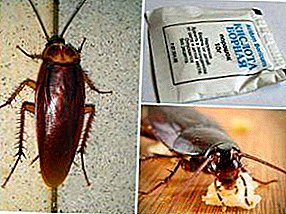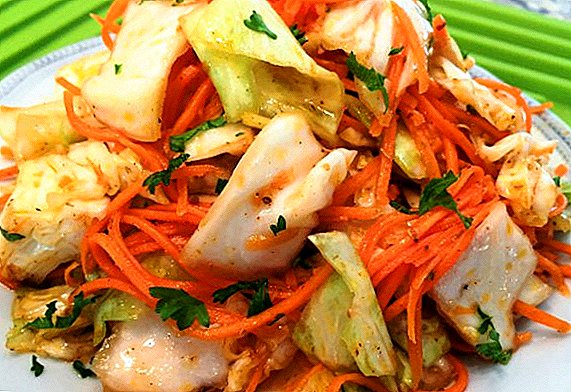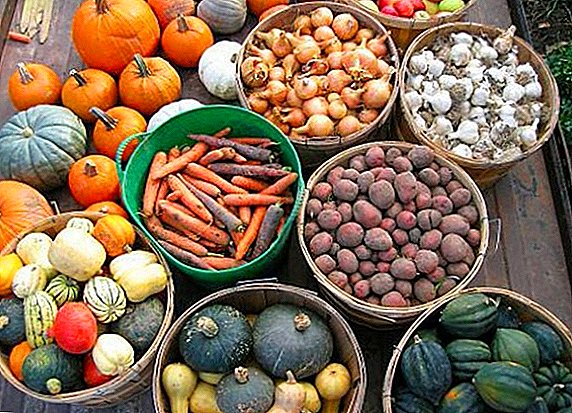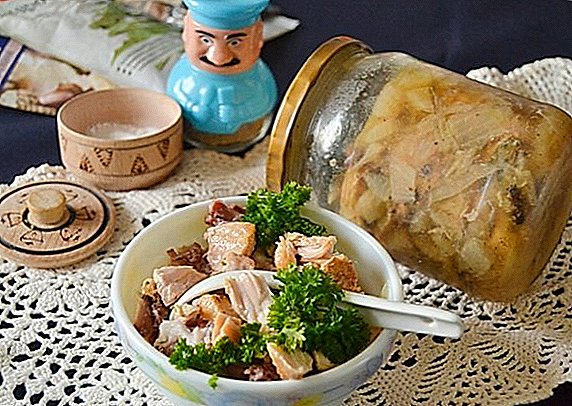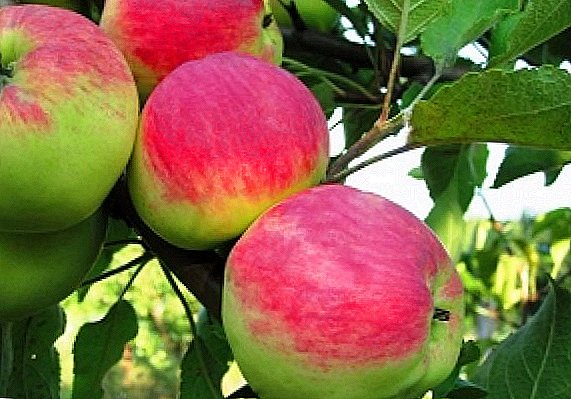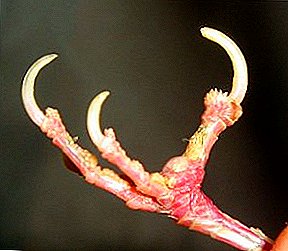
Stafilokokkoz birds (Stafilokokkosis avium) - sporadic or enzootic contagious disease of all kinds of domestic and wild birds, characterized by acute, subacute and chronic course and show clinical signs of septicemia, arthritis, synovitis, kloatsitov, and in rarer cases - vesicular dermatitis, inflammation of the infraorbital sinuses and earrings.
Today, the disease is registered in all countries of the world. It is characterized by weak contagiousness and low mortality.
An exception is contaminated chickens, which are kept in incubators with a high density of the pathogen in the environment or when they are infected during vaccination.
What is bird staphylococcosis?
The pathogen spectrum of the pathogen spreads to all types of birds.
Among the poultry staphylococcosis sick:
- geese;
- ducks;
- chickens aged 11-16 months;
- turkey;
- pheasants;
- guinea fowl
 Staphylococcus was first recorded and described as a separate disease about 100 years ago.
Staphylococcus was first recorded and described as a separate disease about 100 years ago.
In our time, the disease is spread throughout the world. In addition to domestic poultry, sissies, bullfinches, parrots, and canaries exhibit a high susceptibility to the pathogen.
Mechanisms of transmission of staphylococcosis to birds:
- contact, that is, with the direct contact of a sick and healthy bird;
- transmissive, for example, at bites of blood-sucking ticks;
- oral - by ingesting contaminated feed and water.
Transmission factors:
- contaminated care items;
- litter;
- contaminated by pathogen food and water.
The manifestation of the disease may contribute violation of the conditions of poultry.
Content in a damp room, high crowding, poor diet, sudden temperature changes in poultry houses, insufficient ventilation and, as a result, an increase in the concentration of ammonia in the air, frequent rotations of poultry population. Also, the cause of the disease can be the immunization of poultry with a live vaccinated vaccine.
Most often, staphylococcal disease is manifested in association with pasteurellosis, Escherichia coli, Proteus, and Pseudomonas aeruginosa.
The gate of infection is usually the damaged surface of the skin due to injuries of the limbs, scallops and earrings. In newly born chickens, the site of infection could also be an unhealed navel, which leads to the development of omphalitis.
Minor surgical procedures such as cutting a beak, claws, removing feathers, or parenteral administration of vaccines can also cause infection.
With a decrease in the livestock immune status due to the development of infectious diseases affecting the functions of the Fabricius bag or the thymus in the case of infection with staphylococcus in poultry, fulminant development of lethal staphylococcal septicemia is observed.
Economic damage from the disease mainly consists of:
- reduction in egg production (on average by 5–20%, but may be higher);
- losses from mortality (3-15% among the diseased);
- losses from culling (10-30%).
Also to the additional costs include the costs of treatment and disinfection of poultry houses.
Causative agent
 Pathogens of staphylococcus birds - a representative of the genus Staphylococcus of the family Micrococcaceae.
Pathogens of staphylococcus birds - a representative of the genus Staphylococcus of the family Micrococcaceae.
These are spherical microorganisms, 0.8-1 microns in size, immobile.
When coloring on Gram - positive. Dispute and capsules do not form. In a smear arranged in groups that resemble clusters of grapes.
Representatives of such staphylococcus species are often isolated from poultry.:
- St. pyogenes albus;
- St. pyogenes citreus;
- St. aureus;
- St. epidermatis.
St. aureus (Staphylococcus aureus) is most often localized in the bones of birds, tendon sheaths and joints of the limbs. Less commonly, it can be localized on the skin, in the yolk sac, heart, vertebrae, on the eyelids, as well as in the liver and lungs in the form of granulomas.
The main pathogenicity factors of staphylococci are their enzyme complexes, exo-and enterotoxins.
Course and symptoms
 The incubation period of the disease can last from 48 to 72 hours.
The incubation period of the disease can last from 48 to 72 hours.
According to the type of flow, acute and chronic forms are distinguished. In an acute clinic, symptoms appear as vesicular dermatitis, cyanosis of the affected skin areas and inflammation of the membrane.
In the case of a chronic course, the disease is manifested by a decrease in appetite, a decrease in productivity, exhaustion, and ankylosis of the joints.
To the early symptoms of the diseaseI can include lameness on one limb, lethargy, ruffled plumage, sagging of one or both wings. The bird becomes inactive, it has a fever. In acute cases, severe depression may occur, followed by death.
If the disease has become chronic, joints in the affected bird will swell up. She sits, tucked under her limbs and leaning on her chest. The bird is inactive.
 Aarshotz roosters look great under direct sunlight due to their color!
Aarshotz roosters look great under direct sunlight due to their color!Do you need to learn how to deal with pasteurellosis in chickens? Here you will find the answer!
Staphylococcal omphalitis is manifested by inflammatory processes in the area of the umbilical ring and adjacent tissues with the subsequent formation of necrosis in this area.
When conducting a clinical examination of sick individuals, swelling of the facial part of the head and the intermaxillary space is noted. In some cases, bluish-green spots of various sizes can be observed on the scalp.
Diagnostics
 Diagnosis of the disease is made in a complex way: on the basis of the clinical picture, data obtained after an autopsy and laboratory results with the release of the pathogen.
Diagnosis of the disease is made in a complex way: on the basis of the clinical picture, data obtained after an autopsy and laboratory results with the release of the pathogen.
For in vivo diagnosis, you must take a sick bird smear, scrape or wash from the affected area or sample of the litter from a suspicious bird.
To isolate the pathogen in the laboratory from the affected areas and organs do seeding on BCH (meat peptone broth) or MPA (meat peptone agar). The resulting strains are evaluated using a coagulation test.
Staphylococcosis must be differentiated from pasteurellosis and pullorosis.. From non-communicable diseases, it is necessary to exclude peroses (from a lack of trace elements) and thiamine-derived dermatitis. Staging bioprobes to determine the virulence of staphylococcus on 30-60 day-old chickens by intraperitoneal infection.
Treatment
 At the first signs of a disease, a sick bird is removed from the house, and it is disinfected.
At the first signs of a disease, a sick bird is removed from the house, and it is disinfected.
The bird stops giving suspicious feed of animal origin, conduct their research on the presence of pathogenic staphylococcus.
For treatment, various groups of antibiotics are used. When choosing a drug should be based on test data on the sensitivity of the pathogen to various antibiotics.
The general condition of the sick bird is taken into account. Therapy must be comprehensive. To do this, use drugs that increase the overall immune status of the body, including vitamins.
Prevention and control measures
 To combat the disease, general measures are being taken to improve the diet and conditions of poultry.
To combat the disease, general measures are being taken to improve the diet and conditions of poultry.
In the premises where the bird is kept, disinfection is carried out in the presence of the bird using highly dispersed aerosols of lactic acid, resorcinol, bianol, triethylene glycol.
Disinfection of workshops and incubators of eggs, outbuildings, inventory and eggs utilizes 40% formaldehyde solution in the calculation of 10-15 ml per 1 cubic meter of room. In this case, the temperature in it should not be below 15 degrees. Exposure time - 6 hours.
They try to protect the bird from the effect of stress factors such as, long-term transportation, violation of microclimate conditions and the use of live vaccines.
For the prevention of chickens in farms that are unfavorable for staphylococcus, staphylococcal toxoid is used. Chickens are vaccinated twice a week at 10–20 days of age.
Anatoxin can be administered both intramuscularly and aerosol. Immunity appears within 7 days after the last treatment and lasts for 2 months.



